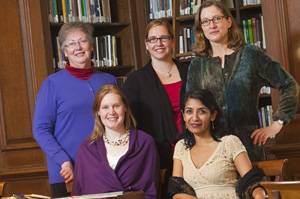 Why is a classical Indian dance dating from the 2nd century B.C. popular again? Why is the donkey, a non-native species, allowed to remain in the park preserve on St. John Island? How are intimacy and divorce viewed in Japanese culture?
Why is a classical Indian dance dating from the 2nd century B.C. popular again? Why is the donkey, a non-native species, allowed to remain in the park preserve on St. John Island? How are intimacy and divorce viewed in Japanese culture?
These questions and more enthuse a group of Lafayette anthropologists who set out on solitary journeys into the field to find answers. While their subjects, locations, and topics vary, they all conduct living fieldwork using such ethnographical techniques as participant observation, interviews, and questionnaires. Their goal is to describe the nature of those who are studied.
The group includes Susan Niles, professor of anthropology and sociology and clerk of the faculty; Nandini Sikand, assistant professor of film and media studies, anthropologist, and filmmaker; Andrea Smith, associate professor of anthropology and sociology; Crystal Fortwangler, Mellon Postdoctoral Fellow in environmental studies, geology and environmental geosciences, and anthropologist; and Allison Alexy, assistant professor of anthropology and sociology.
Ethnographers attempt to explain culture by getting inside of it, getting the insider’s view and then drawing conclusions from the information gathered. They participate in the experience, live in the place, speak the language, and mingle with the people, but also maintain distance in order to observe. They practice detachment, but it is engaged detachment.
This qualitative research results in an in-depth description of a specific set of humans and their daily lives and practices or some particular aspect of their culture. Meaning emerges from the observations and interviews.
When Niles, Sikand, Smith, Fortwangler, and Alexy go into the field, they take their “tools” with them. Besides journals for handwritten notes, other items may include tape recorders, cameras, or video recorders. Sikand’s tool bag might also include a traditional Odissi sari.
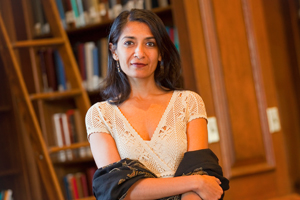
Nandini Sikand
“Odissi is a classical Indian dance that dates from the 2nd century B.C.,” says Sikand, who was born in India and is an Odissi dancer herself. “But this art has been kept alive through time and today there is a thriving global community of Odissi dancers.” The dances are performed in India as a way of promoting the nation and for tourism. Sikand has studied the dances in India as well as interacting with and interviewing dance groups in locations around the world.
“I am interested in the tradition from which the dances arose, and how they are being reinvented today,” she says.

Susan Niles
The focus of Niles’ research also harkens back to the past, but in a very different part of the world—Peru. “I do living fieldwork looking at dead people,” she quips. “I am interested in the Incas and the time period from about 1438 to 1550.” Niles explores the area around Cuzco including Machu Picchu and other sites about 30 km north. Carrying her field gear, she climbs mountains and descends chasms to examine the landscape they built–later occupied by the Spaniards–and the culture they created.
Niles explains that in her study of the Inca, she examines legal records, land disputes, historical line drawings, and other documents and then plays that against her observations of the physical remains.
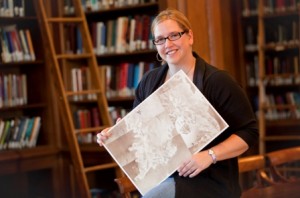
Crystal Fortwangler
Taking a close look at the ways in which people experience and interact with the physical landscape is also central to the research of Fortwangler. Her fieldwork is based on St. John, one of the U.S. Virgin Islands, particularly Virgin Islands National Park established in 1956, which covers much of the island. She studies places and people, but also animals.
Fortwangler is interested in non-native species and the questions about why certain animals and land uses are welcome in protected areas and others are shunned. She also looks at the influence cultural and historical relationships have on these decisions.
She has focused on the wild donkeys–descended from ones imported from Africa to work on the sugar cane plantations in the 18th century–which roam the park freely despite being considered non-native by the park service. “Although some argue that the donkeys don’t belong in the park,” she says, “they are allowed to stay in part because of their long connection with the cultural history of Afro-Caribbean communities on the island.”
Fortwangler explores how relationships with animals and places shape residents’ and scientists’ political identities. Her next project is focused on the green iguana, a relatively new non-native species on the island and in the park.
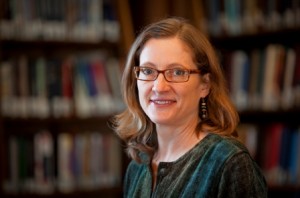
Andrea Smith
Gathering information from social groups about how they remember their collective history is another way of observing how the past influences identity. That approach is central to the fieldwork of Smith. Her research is focused on former French settlers of Algeria (also known as “pied-noirs”) of Maltese descent, who fled Algeria at the end of the French-Algerian War in the 1960s.
“I’m interested in settler ethnicity, the cultural distinctions between settlers in the colony, and how they manifest themselves today,” says Smith, who speaks French and lived in Aix-en-Provence for nearly two years. To view archival sources, she also traveled to Tunisia, Malta, and the United Kingdom.
“I’m interested in stories about the past that circulate via speech,” explains Smith, “so I attended meetings of social clubs geared around Maltese heritage, met with club members at parties, and conducted interviews at their homes.” Through fine-grained analyses of these long, taped conversations, she discerns how the past emerges in everyday talk: which topics are completely silenced, how nostalgia shapes understandings of Algeria, and which themes emerge in which contexts.
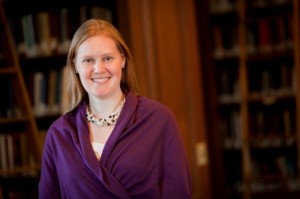
Allison Alexy
For Alexy, the central issue is intimacy among the Japanese and the role of divorce and romance in relationships there. “I put myself in places where I could get into conversations with people about marriage and relationships,” says Alexy, who speaks fluent Japanese. “I could explain my research to people in their language, and once I brought up the word ‘divorce,’ they would begin to talk.”
In Japan, Alexy attended support group gatherings and often made acquaintances that led to other interviews. She emphasizes that an important part of living fieldwork is noticing what is actually happening, “not how you imagine it will happen or how you plan for it to happen.”
All five professors note that fieldwork can only be done on site, and that is why the first question one anthropologist asks another is: where do you do your work? They explain that developing a full understanding of a group of people depends on being with them where they live, seeing how they make their living, observing their social customs, and talking to them in their language.
The personal and professional experiences of these researchers, along with the historical context, lead them to use particular methods. The scholars shape the fieldwork, and the fieldwork shapes them. They walk a thin line ensuring that subjectivity does not interfere with the resulting understanding gleaned from their studies.





